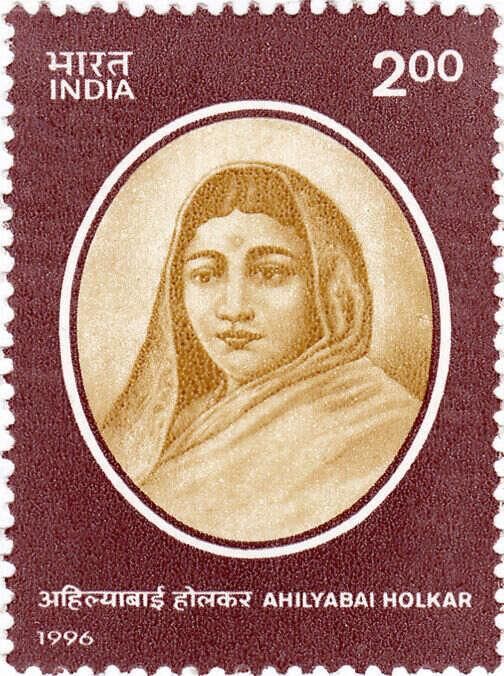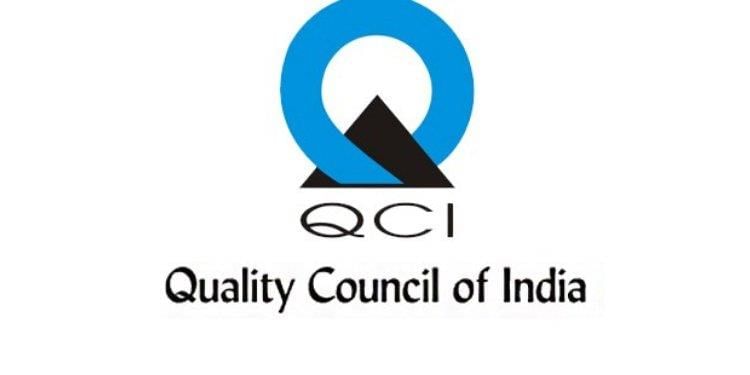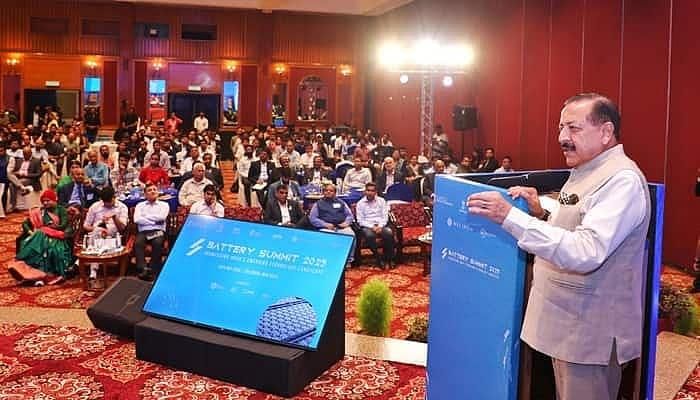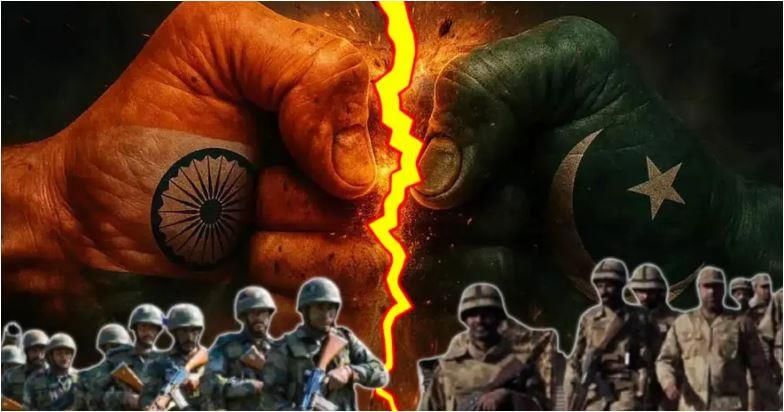UPSC Daily Current Affairs: 31st May 2025 | Current Affairs & Hindu Analysis: Daily, Weekly & Monthly PDF Download
GS3/Economy
Steep Decline: On the Index of Industrial Production
Source: The Hindu
Why in News?
India’s industrial output grew by only 2.7% in April 2025, marking the slowest growth rate in 8 months, indicating a significant slowdown at the beginning of the new financial year (FY26).
Key Takeaways
- Weak performance in core sectors with a growth of only 0.5%.
- Mining activity has contracted for the first time since August 2024.
- Manufacturing and electricity generation show substantial slowdowns.
- Trade uncertainties and low rural demand are impacting overall output.
Additional Details
- Weak Performance of Core Sectors: The eight core industries, which hold a 40% weight in the IIP, registered a growth of just 0.5% in April 2026, the lowest in eight months. Industries such as refinery products, steel, and cement exhibited subdued output, negatively impacting overall industrial growth.
- Contraction in Mining Activity: Mining output shrank by 0.2%, marking its first contraction since August 2024. This decline has adversely affected the availability of raw materials for other industries, particularly impacting electricity generation and steel production.
- Slowdown in Manufacturing and Electricity Generation: Manufacturing growth fell to 3.4% from 4.2%, while power generation dropped to 1.1% from 10.2%. Weak electricity demand and reduced industrial usage reflect sluggish overall economic activity.
- Trade and Tariff-Related Uncertainties: Global trade volatility, tariffs, and supply chain disruptions have diminished demand for export-oriented goods. A decrease in orders from U.S. and EU markets severely affected electronics and textile manufacturing.
- Persistently Low Rural Demand: Consumer non-durables contracted for the third consecutive month, indicating weak rural consumption despite low inflation. Declining sales of food and hygiene products signal demand compression in the FMCG sector.
The contraction in consumer non-durables output raises concerns regarding rural consumption trends. It indicates weak rural demand and suggests low purchasing power and reduced rural spending. This situation is reflected in declining sales of essential items like cooking oil, soap, and packaged food in rural areas.
Furthermore, the economic distress among agriculture-dependent households has persisted despite low inflation. Falling crop prices and realizations below the Minimum Support Price (MSP) restrict rural incomes, leading to diminished purchasing power for basic goods. Farmers earning below MSP struggle to afford essentials, affecting demand in the FMCG sector.
How can implementing MSPs more systematically help boost rural incomes and demand?
- Ensures Price Stability and Income Security for Farmers: A guaranteed MSP reduces the risk of distress sales, providing a stable income floor for farmers, which encourages spending on goods and services.
- Enhances Rural Purchasing Power: Higher farm incomes lead to increased spending on consumer non-durables, which constitute a major part of rural consumption.
- Stimulates Local Economies: Increased rural demand benefits local businesses and FMCG industries, leading to higher production and employment.
Who should drive capital expenditure to revive demand?
- Private Sector as the Primary Driver: The private sector must take the lead in capital expenditure to create productive assets and generate employment, particularly in manufacturing and infrastructure.
- Government as a Catalyst: The government should continue strong capital spending on infrastructure and rural development to encourage private investment.
- Public-Private Partnerships (PPPs): PPPs can combine government support with private expertise, leading to enhanced efficiency in sectors like renewable energy and urban transport.
In conclusion, to boost industrial output and job creation, it is essential to enhance rural demand through systematic MSP implementation and support welfare schemes, while also accelerating capital expenditure through private investment and strategic public spending.
GS3/Environment
Calotes zolaiking: A Newly Recorded Lizard Species in Meghalaya
Source: The Hindu
 Why in News?
Why in News?Recently, the rare lizard species Calotes zolaiking was documented for the first time in Meghalaya, drawing attention to its unique characteristics and habitat.
Key Takeaways
- First Described: This species was first identified in 2019 from the Aizawl district of Mizoram.
- Physical Description: Calotes zolaiking is approximately 5 inches long and showcases a variety of green shades with distinct dark patches.
Additional Details
- Appearance: The lizard is described as “strongly keeled,” indicating that each of its elongated scales features a ridge, contributing to its sharp appearance.
- Family and Behavior: Members of the genus Calotes are tree-dwelling lizards belonging to the family Agamidae. They are known for their remarkable ability to change colors when excited and are active during the day. They can also run quickly on the ground and swim.
- Distribution: This species inhabits gardens and forests across India, Sri Lanka, Southeast Asia, and certain Pacific islands.
- Diet: Their diet primarily consists of insects and other small invertebrates.
The discovery of Calotes zolaiking not only adds to the biodiversity of Meghalaya but also highlights the importance of conservation efforts in the region.
GS1/History & Culture
300th Birth Anniversary of Lokmata Ahilyabai Holkar
Source: PIB
 Why in News?
Why in News?Prime Minister paid tributes to Lokmata Ahilyabai Holkar on her 300th birth anniversary, recognizing her significant contributions to Indian society and culture.
Key Takeaways
- Ahilyabai Holkar was born on May 31, 1725, in Chondi village, Maharashtra.
- She became the ruler of Malwa in 1765 and moved the capital to Maheshwar.
- Her reign was marked by peace, prosperity, and cultural patronage.
Additional Details
- Early Life: Born into the Shephard community, her father was a village head who educated her, which was uncommon for girls at that time.
- Marriage and Loss: Married to Khande Rao Holkar in 1733, she became a widow in 1754. Her father-in-law, Malhar Rao Holkar, recognized her potential and prevented her from committing sati.
- Rise to Power: Following the deaths of her husband, father-in-law, and son, she ascended to the throne of Malwa with support from the Peshwa and her army.
- Military and Administration: Ahilyabai personally led military campaigns and appointed Tukoji Rao Holkar as the military commander, promoting justice and agricultural growth.
Legacy and Contributions
- Temple Restoration: Rebuilt the present-day Kashi Vishwanath Temple in 1780 and renovated numerous shrines across India, including those in Somnath, Haridwar, Pushkar, and Rameswaram.
- Pilgrim Support: Developed infrastructure for pilgrims, including rest houses, shelters, and ghats.
- Maheshwari Sari and Weavers: Supported the handloom industry, economically empowering local weavers and women.
- Social Reforms: Advocated for widows’ rights, supported tribal communities, and maintained a secular and inclusive administration.
- Cultural Patronage: Her court was a gathering place for poets and scholars, enhancing Maheshwar's cultural significance.
- Peaceful Rule: Her 30-year reign was noted for its absence of war, making Malwa a beacon of peace during tumultuous times.
Recognition
- Jawaharlal Nehru referred to her as an able ruler, while British historian John Keay called her "The Philosopher Queen."
- There is a proposal to rename Ahmednagar in Maharashtra as Punyashlok Ahilyadevi Nagar in her honor.
In conclusion, Lokmata Ahilyabai Holkar's legacy as a ruler and cultural patron continues to inspire and influence contemporary Indian society.
UPSC 2009
With reference to Stree Shakti Puraskar, for which of the following is the ‘Devi Ahilya Bai Holkar Award’ given?
- (a) Administrative skills
- (b) Achievements in Scientific Research
- (c) Achievements in Sports and Games
- (d) Courage and valour*
GS3/Defence & Security
17th Edition of Exercise Nomadic Elephant
Source: The Week
Why in News?
The 17th edition of the India–Mongolia Joint Military Exercise NOMADIC ELEPHANT is taking place in Ulaanbaatar, Mongolia, from May 31 to June 13, 2025. This exercise aims to strengthen the military cooperation between the two nations.
Key Takeaways
- The exercise is a bilateral military initiative involving the Indian Army and the Mongolian Armed Forces.
- It was first launched in 2004 and has been conducted annually since then.
Additional Details
- Launch Year: The inaugural exercise was held in 2004, followed by the second edition in 2005 at Vairengte, Mizoram.
- Frequency and Hosting: The exercise occurs annually, with India and Mongolia taking turns in hosting.
- Recent Editions: The 15th edition was conducted in Ulaanbaatar in July 2023, while the 16th edition took place at Umroi, Meghalaya, in July 2024.
- Objectives and Focus:
- Interoperability: The primary aim is to enhance joint operational coordination between the two armed forces.
- Terrain Focus: Troops are trained for task force operations in semi-urban and mountainous regions under a UN peacekeeping mandate.
- Counter-Terrorism Training: The exercise improves capabilities in counter-terrorism and counter-insurgency operations.
- Regional Cooperation: It fosters mutual trust, promotes regional peace, and supports strategic cooperation.
In summary, Exercise NOMADIC ELEPHANT plays a crucial role in enhancing military collaboration and operational readiness between India and Mongolia, reflecting their commitment to regional security and stability.
Question: ‘Hand-in-Hand 2007’, a joint anti-terrorism military training, was conducted by officers of the Indian Army and officers of which one of the following countries?
- (a) China
- (b) Japan
- (c) Russia
- (d) USA
GS3/Science and Technology
JNCASR Develops Fast-Charging Sodium-Ion Battery
Source: PIB
Why in News?
Scientists at the Jawaharlal Nehru Centre for Advanced Scientific Research (JNCASR) in Bengaluru have successfully developed a super-fast charging sodium-ion battery, marking a significant advancement in energy storage technology.
Key Takeaways
- A sodium-ion battery utilizes sodium ions to transfer electric charge, replacing lithium ions.
- The new battery can charge up to 80% in just 6 minutes and endure over 3,000 charge-discharge cycles.
- It offers safety and environmental benefits compared to conventional lithium-ion batteries.
Additional Details
- Sodium-Ion Battery: These are rechargeable batteries that use sodium (Na+) ions for charge transfer, functioning similarly to lithium-ion batteries.
- Innovation: The battery employs NASICON-type chemistry, which facilitates fast ion movement and enhances stability.
- Performance improvements were achieved through the use of nano-particles, a carbon coating, and aluminium doping.
- Advantages: Sodium is abundant and more economical than lithium, extracted from seawater. Moreover, sodium-ion batteries are safer since they can be transported at zero voltage and function well at high temperatures without fire risks.
- These batteries are environmentally friendly, causing less ecological damage during extraction compared to lithium, and have reduced material costs due to the use of aluminium instead of copper.
- By utilizing sodium-ion technology, India can lessen its reliance on China, which dominates the lithium supply chain.
- These batteries are particularly suitable for renewable energy applications like solar grids, electric vehicles, drones, and rural electrification in extreme climates.
The development of sodium-ion batteries represents a crucial step towards more sustainable and efficient energy storage solutions, addressing both safety and environmental concerns while potentially revolutionizing various sectors reliant on battery technology.
GS3/Economy
UPI Empowers Rural Women: Online Banking Sees Sharp Rise
Source: Indian Express
 Why in News?
Why in News?A recent survey conducted by the Ministry of Statistics indicates a significant increase in rural women's ability to conduct online banking transactions, with the percentage rising from 17.1% in 2022-23 to 30% in early 2025. This growth is particularly notable among young women, attributed to greater access to digital technology.
Key Takeaways
- 30% of rural women can now use online banking, marking a considerable increase.
- Young women aged 15-24 show the most dramatic improvement in digital banking capabilities.
- Despite growth, a gender gap persists in UPI usage between men and women.
Additional Details
- Gender Gap in UPI Adoption: Estimates suggest that less than 30% of UPI users are women, with the gap being narrower in larger cities compared to rural areas.
- Factors hindering women's usage of digital payments include:
- Lack of access to smartphones and the internet.
- Inadequate digital skills and financial literacy.
- Limited financial autonomy.
- UPI for Her Initiative: Launched in August 2024, this initiative aims to tap into a market of 200 million women users by promoting digital financial literacy and targeted marketing strategies.
In conclusion, addressing the UPI gender gap is crucial for empowering women and ensuring their active participation in India's digital economy. Enhancing access to technology and financial education will foster greater engagement with digital financial tools among women in rural areas.
GS3/Economy
The Challenge of Higher Education in India
Source: Business Standard
Why in News?
The admission season in India is marked by numerous colleges and universities promoting their commitment to knowledge, transformation, and research excellence. However, while enrolment in undergraduate, postgraduate, and doctoral programmes is on the rise, this growth reveals a troubling reality: the rapid increase in degrees awarded is not matched by a corresponding rise in job opportunities, creating a significant mismatch between education and employment.
Key Takeaways
- The increase in higher education enrolment is profound, yet unemployment rates rise with higher levels of education.
- Non-elite institutions in Tier 2 and Tier 3 cities face significant challenges, including outdated curricula and lack of industry connections.
- Many graduates are unable to translate their academic achievements into practical job skills, leading to high unemployment rates among educated youth.
Additional Details
- Disconnect between Education and Employability: Graduates often possess theoretical knowledge but lack practical skills necessary for the workforce. For instance, an English literature graduate may study Shakespeare but cannot draft a professional email.
- Many academic institutions prioritize abstract scholarship over employability, resulting in graduates who are ill-prepared for the job market.
- Government initiatives like Skill India and the National Education Policy aim to bridge this gap, but implementation remains inconsistent and often superficial.
- Societal Perception of Vocational Training: In India, vocational education is often viewed as an option for those who are academically unsuccessful, unlike countries such as China and Japan where it is integral to economic planning.
- Integrating practical skill modules into degree programmes is essential for enhancing employability and addressing societal stigma around vocational training.
To address these critical issues, India must evolve its education system to align academic curricula with practical needs, ensuring that degrees serve as gateways to meaningful employment and economic empowerment. This transformation is essential for realizing India's demographic dividend and fostering a workforce equipped for the challenges of tomorrow.
GS3/Economy
Quality Council of India (QCI)
Source: PIB
 Why in News?
Why in News?The Minister of State for Commerce and Industry recently inaugurated the new unified headquarters of the Quality Council of India (QCI) located at the World Trade Centre in New Delhi.
Key Takeaways
- QCI was established in 1997 as a non-profit body through a public-private partnership.
- It serves as India's national accreditation body, focusing on quality assessments across various sectors.
Additional Details
- Establishment: QCI was formed in 1997 through a collaboration between the Government of India and industry associations such as ASSOCHAM, CII, and FICCI.
- Legal Status: It is registered under the Societies Registration Act, 1860.
- Leadership: Initially chaired by Ratan Tata, the current chairman is appointed by the Prime Minister.
- Parent Department: QCI operates under the Department for Promotion of Industry and Internal Trade (DPIIT), within the Ministry of Commerce and Industry.
- Role: Acts as India's national accreditation body, offering independent assessments of products, services, and processes.
- Mission: Aims to enhance quality standards in key areas including education, healthcare, environment, governance, and infrastructure.
- Financial Model: It is a self-sustaining organization, generating its revenue independently without relying on regular government funding.
Structure, Divisions, and Key Functions
- Governing Council: Comprises a 38-member council with equal representation from stakeholders to oversee QCI.
- Key Divisions: Operates through five major boards, each focusing on different sectors:
- National Accreditation Board for Testing and Calibration Laboratories
- National Accreditation Board for Hospitals and Healthcare Providers
- National Accreditation Board for Education and Training
- National Accreditation Board for Certification Bodies
- National Board for Quality Promotion
- Core Activities:
- Develops accreditation systems and quality frameworks.
- Conducts third-party audits for initiatives like Swachh Bharat Abhiyan and Pradhan Mantri Kaushal Vikas Yojana.
- Runs the National Quality Campaign to foster a culture of quality across sectors.
- Enhances India's global competitiveness through quality certification and awareness initiatives.
In summary, the Quality Council of India plays a crucial role in promoting quality standards across various sectors, thereby enhancing India's competitiveness on a global scale.
UPSC 2017
With reference to Quality Council of India (QCI), consider the following statements:
- 1. QCI was set up jointly by the Government of India and the Indian Industry.
- 2. The Chairman of QCI is appointed by the Prime Minister on the recommendations of the industry to the Government.
Which of the above statements is/are correct?
- (a) 1 only
- (b) 2 only
- (c) Both 1 and 2*
- (d) Neither 1 nor 2
GS2/Polity
National Florence Nightingale Award
Source: Indian Express
Why in News?
Recently, the President of India conferred the National Florence Nightingale Awards for the year 2025 during a formal ceremony held at Rashtrapati Bhavan. This event highlights the exceptional contributions of nurses in the healthcare sector.
Key Takeaways
- The National Florence Nightingale Award was established by the Ministry of Health and Family Welfare, Government of India, in 1973.
- This prestigious award recognizes outstanding nursing professionals working in Central, State/UTs, and Voluntary Organizations.
Additional Details
- Eligibility: Nurses in various roles, including hospital, community, educational, or administrative settings, are eligible for this national award.
- Award Components: The award consists of a Certificate of Merit, a cash prize of Rs. 1,00,000, and a medal, serving as a mark of recognition for meritorious services.
The National Florence Nightingale Award symbolizes the appreciation of nurses' dedication and service to society, reinforcing the importance of nursing in healthcare.
Who is Florence Nightingale?
Florence Nightingale was an English social reformer and statistician, widely recognized as the founder of modern nursing. She gained prominence during the Crimean War, where she served as a manager and trainer of nurses, organizing care for wounded soldiers in Constantinople. Her dedication to formalizing nursing education led to the establishment of the first scientifically based nursing school, the Nightingale School of Nursing, at St. Thomas’ Hospital in London.
GS3/Science and Technology
Battery Aadhaar Initiative
Source: Business Today
 Why in News?
Why in News?The Battery Aadhaar initiative was recently showcased by Tata Elxsi in collaboration with key consortium partners during the Battery Summit 2025, organized by the World Resources Institute (WRI) India. This initiative aims to enhance the battery industry's transparency and sustainability.
Key Takeaways
- The initiative provides batteries with secure, digital identities for better traceability.
- Each battery pack is assigned a unique digital identity to track its manufacturing origin, chemistry, safety certifications, and lifecycle performance.
- The initiative aims to prevent unsafe reuse and mitigate environmental risks.
- It is supported by the UNEP-led program 'Electrifying Mobility in Cities' coordinated by NITI Aayog and the Department of Science & Technology, Government of India.
Additional Details
- Digital Product Passport: This feature allows for comprehensive lifecycle mapping and access to public and private data.
- Real-time Analytics: The initiative includes role-based dashboards and analytics for health prediction and residual life estimation of batteries.
- The system is built on blockchain technology called MOBIUS+, which ensures transparent data flows and tamper-proof audit trails.
- This initiative aligns with India's broader goals for sustainable mobility and the establishment of circular energy systems.
The Battery Aadhaar initiative represents a significant step towards ensuring safer and more sustainable practices in the battery industry, supporting compliance with regulatory standards while promoting environmental responsibility.
GS2/International Relations
Pakistan’s Ongoing Conflict with India
Source: TOI
 Why in News?
Why in News?The recent conflict underscores the persistent efforts of Pakistan's military-led government to disrupt India’s development and stability.
Key Takeaways
- Pakistan employs a military-dominated strategy aimed at undermining India.
- The ideological basis of Pakistan's identity fuels its conflict with India.
- Technological advancements have transformed modern warfare dynamics.
Additional Details
- Military Mindset: Pakistan's leadership seeks to weaken India, adhering to the strategy of "bleeding India by a thousand cuts." Examples include recurrent cross-border skirmishes and supporting proxy insurgencies in Kashmir.
- Ideological Nationalism: The identity of Pakistan is fundamentally linked to its opposition to India’s secular democracy, which it views as a threat to its existence.
- Political Instability: The military’s control over Pakistan’s politics legitimizes its authority while diverting attention from domestic issues, often sidelining civilian leaders.
- Military Dominance: The military's influence over political decisions is crucial, as it often dictates Pakistan's approach toward India, whether through conflict or attempts at peace.
- Technological Warfare: The conflict has shown a rise in drone warfare, with both nations utilizing advanced technology for reconnaissance and strikes, exemplified by Pakistan’s deployment of Turkish Songer drones and India’s Kamikaze drones.
- Defence Readiness Gaps: India faces challenges such as inadequate space-based surveillance capabilities and a lack of preparedness for a two-front war scenario involving both Pakistan and China.
In conclusion, the ongoing tensions between Pakistan and India highlight the complexities of military strategy, ideological conflicts, and the urgent need for improved defence readiness in the face of evolving threats.
|
44 videos|5359 docs|1133 tests
|
FAQs on UPSC Daily Current Affairs: 31st May 2025 - Current Affairs & Hindu Analysis: Daily, Weekly & Monthly
| 1. What is the Index of Industrial Production (IIP) and why is it important? |  |
| 2. What is the significance of the discovery of the Calotes zolaiking lizard species in Meghalaya? |  |
| 3. Why is the 300th Birth Anniversary of Lokmata Ahilyabai Holkar being celebrated? |  |
| 4. What is Exercise Nomadic Elephant and what is its purpose? |  |
| 5. How does the Battery Aadhaar Initiative contribute to renewable energy in India? |  |
















